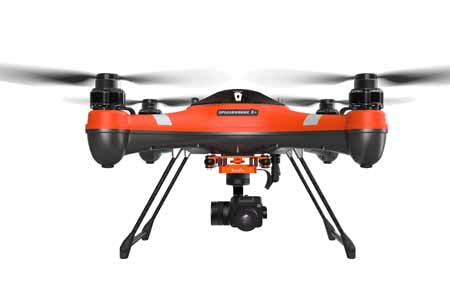THANK YOU FOR SUBSCRIBING
Beyond Visual Line of Sight Drones to Enhance Precision Farming
To utilize drones to their full potential in the agricultural sector today, researchers are pushing the technology to operate beyond visual line of sight (BVLOS) operations

By
Apac CIOOutlook | Thursday, March 19, 2020
Stay ahead of the industry with exclusive feature stories on the top companies, expert insights and the latest news delivered straight to your inbox. Subscribe today.
To utilize drones to their full potential in the agricultural sector today, researchers are pushing the technology to operate beyond visual line of sight (BVLOS) operations
FREMONT, CA: The use of unmanned aerial vehicles (UAVs) in the agricultural sector has been practiced for decades. There is evidence showing that Japan used unmanned helicopters to spray pesticides on the rice fields back in the 1980s. To utilize drones to their full potential in the agricultural sector today, researchers are pushing the technology to operate beyond visual line of sight (BVLOS) operations.
Agriculture is the second most crucial market, after infrastructure to use drone-powered solutions. With the increasing population of the earth, it is predicted that agricultural consumption will increase to a 69 percent high by 2025. Today, the main obstacle in farming is to gather insights on crops and livestock that are scattered across large areas of land and in timely enough to intervene quickly when in need. UAVs play a significant role in overcoming this obstacle. Drones with multispectral, hyperspectral, thermal, and high-resolution regular cameras help farmers monitor water, fertilizers, herbicides, and insecticides. Drones do this job more cheaply than manned aircraft, more closely than satellites, and more regularly than both.
As the Federal Aviation Administration (FAA) limits the unmanned aircraft to fly within the visual line of sight of their pilots in the U.S., the potential value drones have for farming has largely been obstructed. With BVLOS, drones can operate across larger areas. A prediction done by PrecisionHawk points out that BVLOS can bring down the cost of data acquisition by more than ten times.
BVLOS operations can use methods developed for big data to generate deep insights into the agriculture sector. Flying BVLOS can prove mainly helpful for large perennial crops such as trees. It beats the challenge of carrying out large-scale operations in areas covering hundreds or thousands of acres where pilots have to move from one point to another. The uneven heights of trees also impede the visual line of sight, which is overcome by flying BVLOS.
Gathering data is another crucial benefit of BVLOS. Farms with restricted network connectivity might face difficulties in downloading and uploading vast amounts of information for analysis. BVLOS benefits the major agricultural service providers with global operations by sending data over the cloud for analyses with greater scopes.
Recently at the end of 2019, the U.S. took a step to implement BVLOS when FAA issued a notice of proposed rulemaking regarding a way to identify unmanned aircraft remotely. With remote ID systems, which act like electronic license plates, drones could identify themselves to remote observers. The remote ID system also lays the foundation toward UAS traffic management (UTM) that makes the entire national airspace system scalable.
Using only onboard detect-and-avoid systems, FAA approved the first commercial BVLOS drone operation in the U.S. last year. To inspect power lines, a nine-mile flight program was conducted by the Kansas Department of Transportation's Unmanned Aircraft Systems Integration Pilot Program, in collaboration with Evergy last November.





